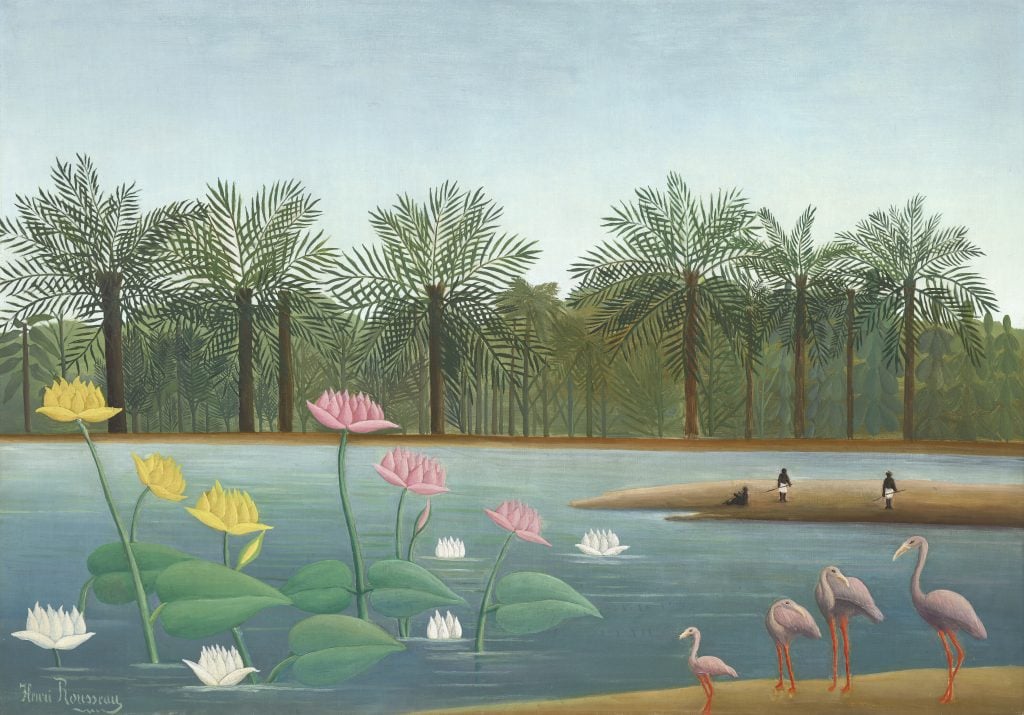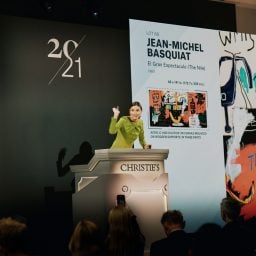New York’s spring auction season kicked off this evening with a double-header at Christie’s, starting with a tranche of 16 works from the collection of the late media magnate S.I. Newhouse, followed by a corresponding 20th-century evening sale that spanned 56 lots.
Respectively, the auctions netted $178 million and $328.8 million (with fees factored in; unless otherwise noted, final prices include buyer’s premium, but estimates do not). The $506.6 million total marked a healthy albeit measured kickoff to the auction season in a climate of economic uncertainty. The Newhouse sale was white-glove as anticipated, while the 20th-century sale had an 80% sell-through rate, with two pieces withdrawn and seven lots passed over.
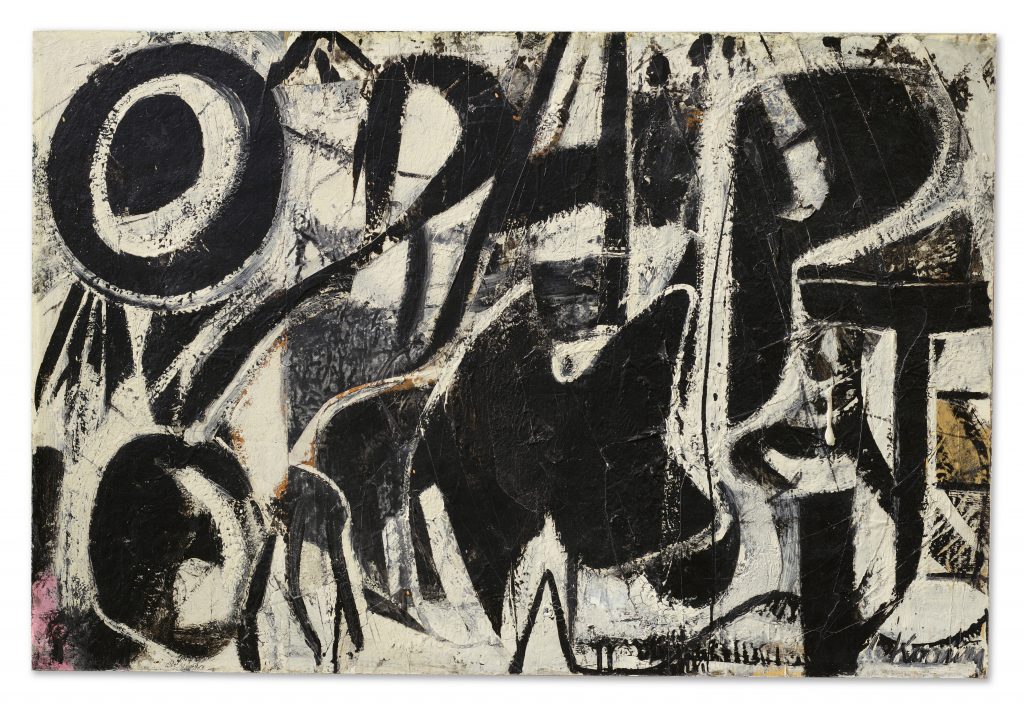
Willem de Kooning, Orestes (1947). Courtesy of Christie’s. © 2023 The Willem de Kooning Foundation/Artists Rights Society, New York.
In an economic environment of mixed messages—while inflation seems to be cooling, meaning the Federal Reserve may be done with interest-rate hikes, investors remain rattled by bank failures and geopolitical uncertainty—all eyes were on bidding in the season’s first major test. Among those in the room to read the economic tea leaves were David Benrimon, Larry Gagosian, Jeffrey Deitch, David Mugrabi, Joe Nahmad, and Dominique Lévy.
The Newhouse lots attracted some of the loftiest expectations, despite being the third slice since the late publishing magnate’s death in 2017 to reach the secondary market.
But the spring auctions had somewhat muted expectations overall. By comparison, last fall, the houses’ combined presale estimates reached $2.1 billion to $2.9 billion, in no small part due to the many blockbuster offerings from the collection of late Microsoft cofounder Paul Allen. The eventual tally ballooned to over $3 billion. This month, total estimates are $1.3 billion to $1.9 billion.
By nailing the middle of its overall estimate, the first results should mollify any immediate panic that the art market has cratered. The Newhouse auction saw $178 million worth of art trade over fewer than two dozen lots. But even as records were breaking, the number of lots passed over in the latter portion and those that faltered below their low estimate did begin to raise eyebrows in the room. Even the more contested lots offered at most a mannered volley among two or three parties.
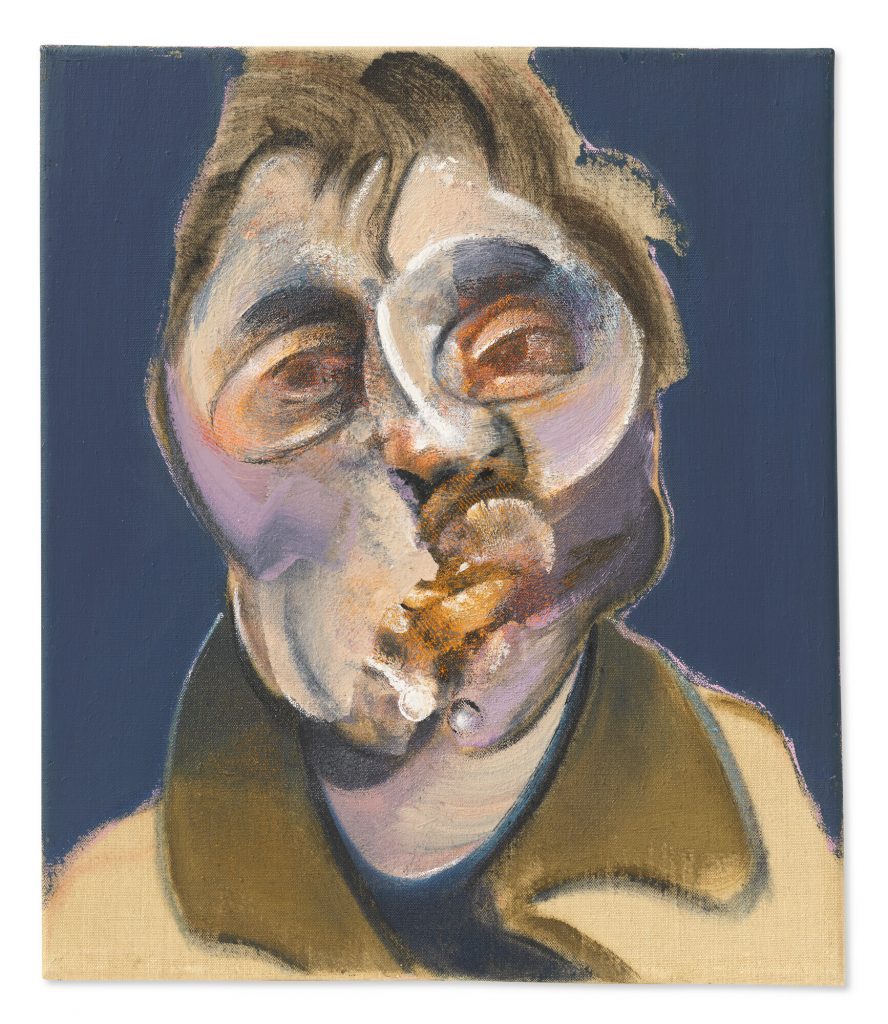
Francis Bacon, Self-Portrait (1969). Estimated at $22 million to $28 million, it sold for $34.6 million. © Christie’s Images Limited 2023.
The proceedings commenced with the Newhouse sale. “We saw 16 works across 100 years, so we all got to see the world through his eyes,” said Max Carter, Christie’s vice chairman of 20th and 21st century art, who threw himself into the fray on behalf of several clients that evening.
It appeared that 11 lots were backed by third-party guarantors. Those included Pablo Picasso’s 1937 portrait of photographer Lee Miller, titled L’Arlésienne (Lee Miller). It was the first time the piece had ever hit the auction block. Newhouse bought it directly from PaceWildenstein in 1999 and had hung onto it ever since. The piece squeaked past its low estimate of $20 million, selling for $25.6 million.
Several more pieces crossed into eight-figure territory, including Newhouse’s small but powerful 1969 self-portrait by Francis Bacon, which sold for $34.62 million (est. $22 million–$28 million); Ed Ruscha’s Burning Gas Station (1966–9; est. $20 million–$30 million), which fetched $22.3 million; and Picasso’s Nature morte à la fenêtre (1932; est. near $40 million), for $41.8 million.
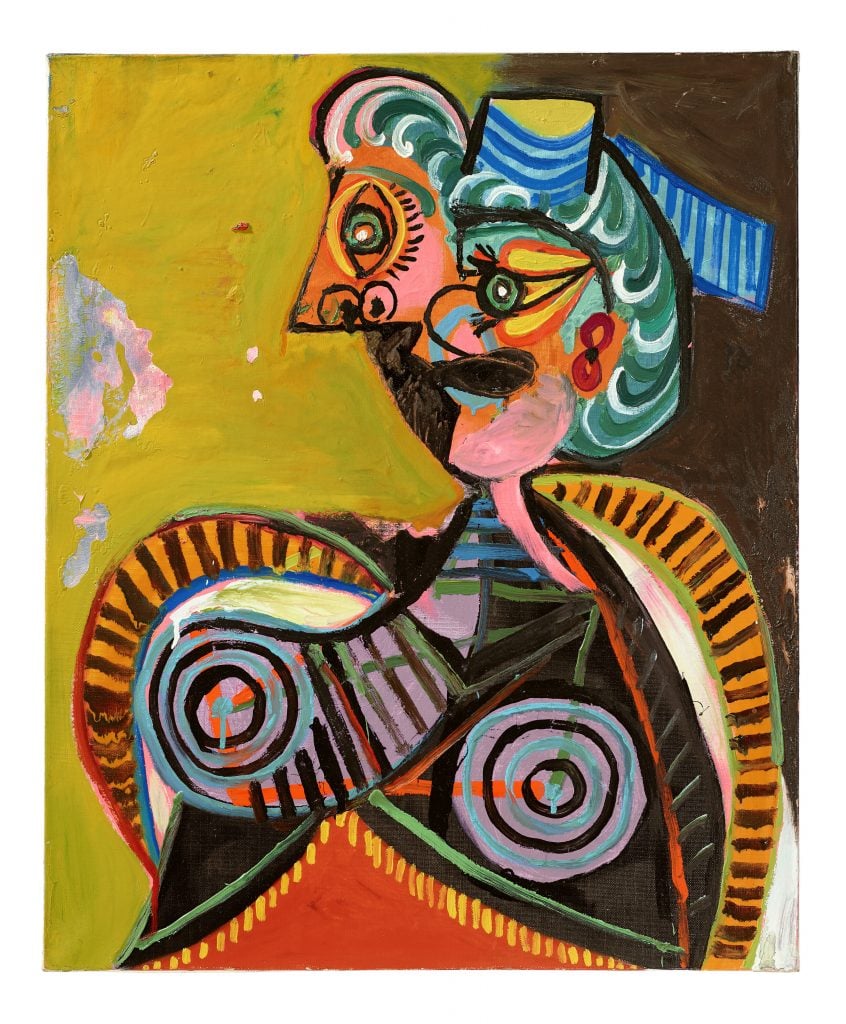
Pablo Picasso, L’Arlésienne (Lee Miller) (1937). Estimated at $20 million to $30 million, it sold for $24.6 million. © Christie’s Images Limited 2023.
The most impressive lot of the sale was Willem de Kooning’s bold, dramatic abstraction Orestes (1947), which Newhouse acquired in 2002 from Sotheby’s. He bought the piece when Tobias Meyer, who would later become his advisor, was Sotheby’s chief auctioneer and worldwide head of contemporary art. Tonight, the piece sold for nearly $31 million, eclipsing its estimate of over $25 million. This is the sixth-highest price achieved by de Kooning at auction, with the high water-mark for his work at $68.94 million, paid at Christie’s in 2018 for Woman as Landscape (ca. 1954–55).
Christie’s continued to push single-owner provenances in the second leg of the evening, with seven more works from the notoriously lucrative Paul Allen collection arriving on the block, accounting for $88.9 million in sales and bringing the net earnings from the Microsoft cofounder’s collection to $1.7 billion, making—the biggest sale in art market history that much bigger.
First up was Felled Trees by David Hockney, one of three pieces by the artist from the Allen collection up for sale that evening, which prompted the auctioneer, Jussi Pylkkänen, to fondly recall the original Allen sale as “a highlight in all of our careers at Christie’s.” This relatively recent Hockney, painted in 2008, fetched $10.8 million, more than double its low estimate of $4 million. The two others—both landscapes—sold to phone bidders for $19.4 million and $14.7 million.
Auction records were set for two artists during the sale. The previous record for a Ken Price was broken by the sculpture M. Green (1961), which brought in a cool $554,000 on an estimate of $150,000 to $200,000. Even more shocking, Agnes Pelton’s record was smashed 13 times over, with the ethereal tableau The Fountains (1926) raking in $3.4 million on its $1.5 million to $2.5 million estimate, selling to a client on the phone with Marc Porter, chairman of Christie’s Americas.
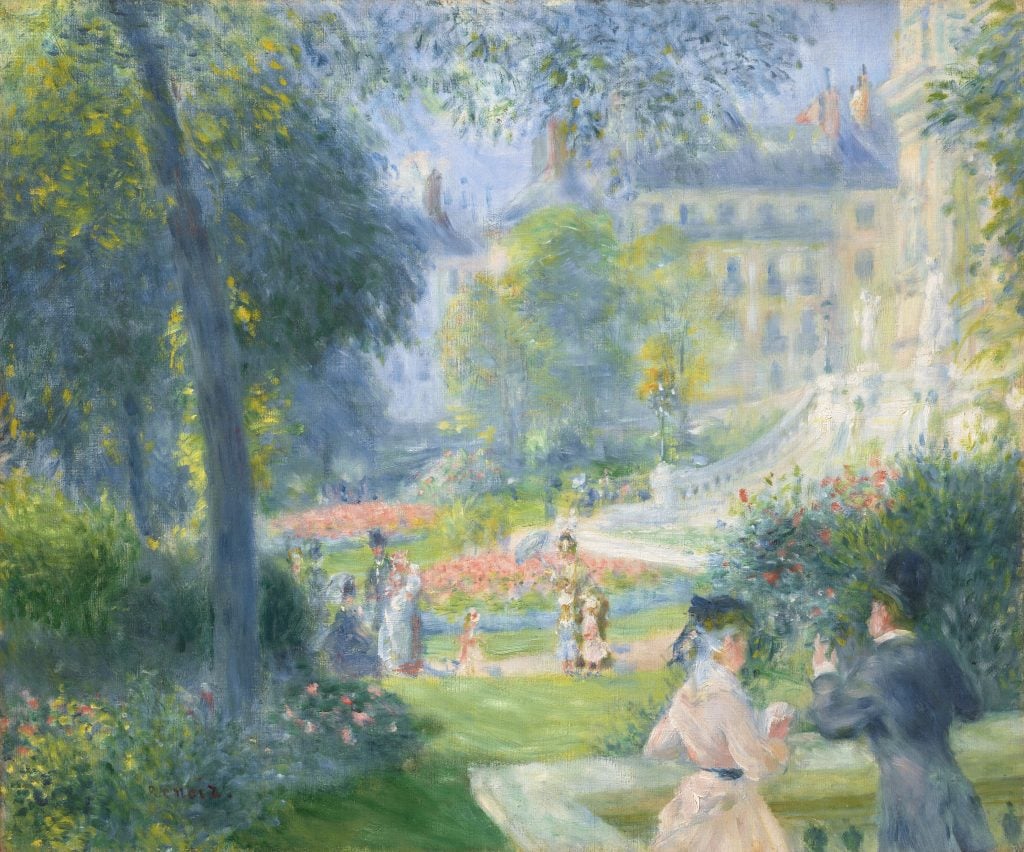
Pierre-Auguste Renoir, Square de la Trinité (1878–9). Estimated at $4 million to $6 million, it realized $11.9 million. © Christie’s Images Limited 2023.
Ironically, it was noted that Christie’s specialist Sarah El-Tamer was wearing a Roy Lichtenstein-inspired sweater that bore the word “CRASH” in bright red letters as she liaised with bidders on the phone. Though a representative confirmed to the press that the outfit was not intended as a cryptic message, there was a good dose of irony that when she donned a black shawl over the garment, a string of works began to come in for well above their estimates, including two prime Georgia O’Keeffe flower canvases from the Allen collection, which respectively sold for $21.1 million on a $5 million to $7 million estimate (Black Iris VI) and $13.1 million over a $6 million to $8 million estimate (White Calico Rose). Shortly thereafter, there was a long bidding war over Pierre-Auguste Renoir’s Square de la Trinitié (1878–9), which realized $11.9 million on a high estimate of $6 million—a surprising performance for a non-20th-century work (and one of two Renoirs—plus a bought-in Gauguin—included in the sale).
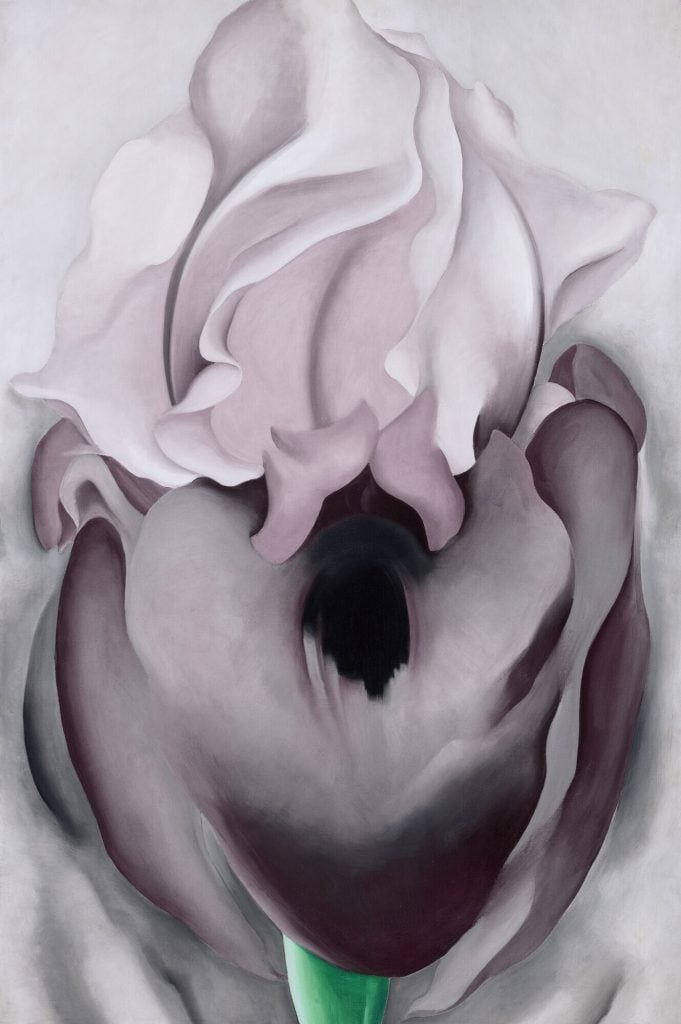
Georgia O’Keeffe, Black Iris VI (1936). Estimated at $5 million to $7 million, it sold for $21.1 million. © Christie’s Images Limited 2023.
But the star lot of the night was Henri Rousseau’s Les Flamants (1910), one of the artist’s “jungle paintings,” made in the last year he was alive. The piece more than doubled its low estimate of $20 million, raking in a total of $43.54 million, the most expensive piece of art sold all evening. The sale nuked the artist’s existing record of $4.4 million, which was set thirty years ago, simply because another piece has not come to auction since.
“Les Flamants has been in the legendary Whitney collection since 1949 and it could easily be another century before we see a work of this caliber come to market,” Vanessa Fusco, co-head of the 20th-century evening sale and head of the Impressionist and modern art department, said in a statement. “Tonight was certainly a once-in-a-lifetime moment and a career high.”
